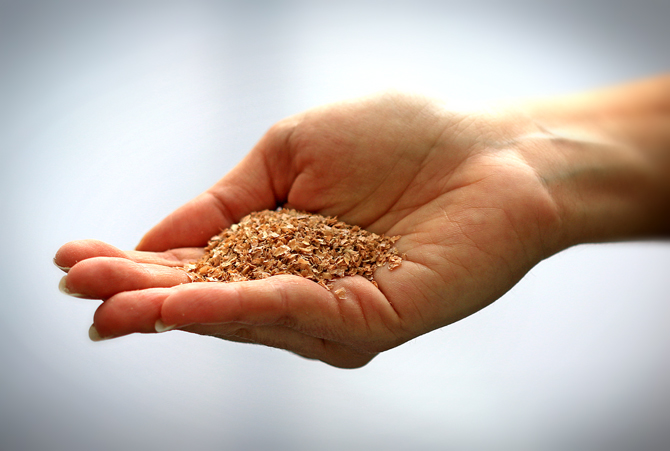Antioxidants and plastics could be made from byproducts of wheat milling

It’s usually used as livestock feed, but wheat bran’s value in human nutrition and medicine may soon reach its full potential with a new sustainable processing method developed by Swedish researchers.
As a commodity, the least valuable part of the wheat grain is the bran – the outer coating of the kernel, which is typically sold as animal feed. Now researchers at KTH Royal Institute of Technology have developed a process to extract valuable biomolecules from this offal that could be used as antioxidants, prebiotics and even food packaging material.

The extraction process uses only hot, high pressure water and carbohydrate-active enzymes to harvest wheat bran’s hemicelluloses and oligosaccharides. This process allows these polysaccharides to retain their antioxidant properties – which are stripped away through ordinary alkaline extraction techniques.

Andrea Ruthes , postdoctoral researcher, and Francisco Vilaplana , associate professor in Glycoscience at KTH Royal Institute of Technology are the scientists behind this discovery, which was reported in the recent issue of the journal Green Chemistry.
“In bran and other cereal tissues, the hemicelluloses are difficult to extract because they’re tighly interconnected and recalcitrant,” Vilaplana says. One way to do it is with alkaline, but that also destroys the part of the molecule that gives it its antioxidant functions.
“We use a cascade approach where we first extract the hemicelluloses in polymer form and then we use the enzymes to selectively tackle the un-extractable residue. In this way we maximize total yields of valuable biomolecules from the bran,” he says.
Vilaplana says his research group is studying possible applications for these biopolymers, including active food packaging films and thickeners that provide a natural, non-additive way to prevent oxidation. In medicine, they could also be used to encapsulate oxygen-sensitive active compounds and to reduce the inflammation caused by reactive oxygen species (ROS) in biomedical applications.
The hemicelluloses and oligosaccharides are also well-known to have prebiotic properties as dietary fibres, which are important for improved nutrition and human health.
“Our process could contribute over the long term to use of cereal hemicelluloses with antioxidant activities in many ways, such as non-fossil based packaging, preserving sensitive foods or drugs from oxidation, dietary fibre supplements and texturizing gels in food and cosmetic products.
David Callahan
Here is a short video showing how the extraction process is done.
Sequential fractionation of feruloylated hemicelluloses and oligosaccharides from wheat bran using subcritical water and xylanolytic enzymes , by Andrea C. Ruthes, Antonio Martínez-Abad, Hwei-Ting Tan, Vincent Bulonea and Francisco Vilaplana.
DOI: 10.1039/c6gc03473j

